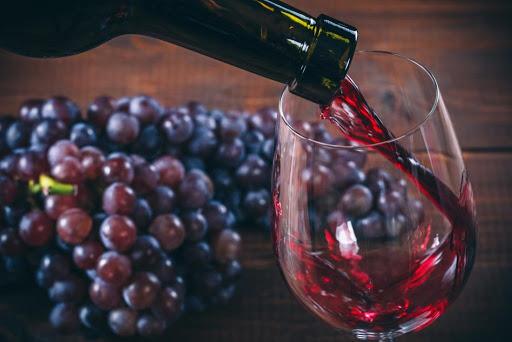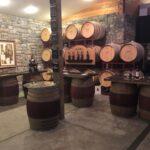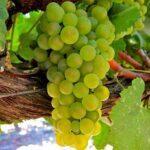Off The Beaten Path
Finding great wines as always begins with the grapes. Each varietal has its own alcohol and sugar profiles. While any wine can be processed to reduce sugars and alcohol content but not all grapes are best suited for this and in the process often lose flavor. Red wines can be some of the hardest to find.
While many factors influence alcohol and sugar content such as growing region and time on the vine, it is best to start with grapes that naturally have a profile that falls below the 12.5 % threshold rather than select grapes that naturally have a higher. For example, Cabernet (13.5–15%) and Zinfandel (15%) grapes start on the high-end naturally. Our research has introduced us to many wine grapes that have been historically offered as wines themselves but in recent years found themselves part of blends or part of other wines.
In fact, in recent years grape varietals such as Cinsault and Carménère have reemerged from being used as a blending grape to creating great wines in their own right. Winefolley.com has a comprehensive list of varietals. We’ve curated a list of grape varietals from their list that fit the lower alcohol profile.
Red Wine Varietals to Check Out (avg 82 calories per 5 oz pour)
- Agiorgitko
- Baga
- Bobal
- Bonarda
- Brachetto
- Cabernet Franc
- Carménère
- Cinsault
- Dolcetto
- Frappato
- Gaglioppo
- Gamay
- Listán Negro (Pisco)
- Montepulciano
- Nerello Mascalese
- País (Listan Prieto)
- Pinot Meunier
- Pinot Noir
- Refosco
- Schiava
- St. Laurent
- Zweigelt
Higher Calorie and Alchohol Red Wine Varietals (avg 120 + calories per 5 oz. pour)
- Cabernet
- Merlot
- Nebbiolo
- Zinfandel
Grape Varietal Details
Agiorgitiko (pronounced: ah-your-yeek-tee-ko)
Primary flavors: Raspberry, Blackberry, Plum Sauce, Black Pepper, Nutmeg
Origin: Greece
Natural ABV Range: 11.5–13.5%
Agiorgitiko is a fragrant red-wine grape native to Greece’s Peloponnese peninsula. It is one of the country’s most widely planted wine grapes after Xynomavro, and goes by a number of local synonyms. Agiorgitiko is the sole variety permitted in the Nemea appellation and performs admirably well in the hot Mediterranean climate there.
Agiorgitiko is a remarkably versatile grape variety, and is used to make everything from light rosé wines to rich, full-bodied red wines with dark fruit flavors and plush tannins. Barrel maturation, not just in oak, but in a range of local and imported woods is increasingly used in Greece to assist Agiorgitiko’s aging process.
Baga (prononced: bah-gah)
Primary flavors: Blackberry, Black Currant, Dried Cherry, Cocoa, Tar
Origin: Portugal
Natural ABV Range: 11.5–13.5%
Baga is a dark-skinned grape variety used to make red wines in the central coast of Portugal. It is particularly prevalent in the Bairrada DO in the Beiras region, where Baga vines far outnumber those of any other red wine variety. The degree of clonal diversity found here suggests it is also the grape variety’s place of origin. The neighboring Dão and Ribatejo appellations also use Baga, traditionally in blends but increasingly in varietal bottlings
Bobal (prononced: bo-bal)
Primary flavors: Plum Sauce, Cherry, Cardamom, Fig Paste, Graphite
Origin: Spain
Natural ABV Range: 11.5–13.5%
Bobal is native to the Utiel-Requena region in Valencia, Spain. The presence of Bobal in Utiel-Requena was documented in the 15th century in “Espill o llibre de les dones” by Jaume Roig. The name derives from the Latin bovale, in reference to the shape of a bull’s head.
It is grown predominantly in the Utiel-Requena DOP where it represents about 80% of the red grapes vines grown and is also present in significant quantities in Valencia, Cuenca and Albacete. It can only be found in small quantities in other regions of Spain: La Manchuela (Castilla–La Mancha).
Bonarda (prononced: brak-kett-toe)
Primary flavors: Black Cherry, Plum Sauce, Allspice, Violet, Tobacco Leaf
Origin: Argentina
Natural ABV Range: 11.5–13.5%
Although its origins lie outside of Argentina, Bonarda is, by all means, an Argentine grape. Once the most widely planted red grape variety in the country, it is now the second most planted as Malbec has pipped it to the post. As with most of Argentina’s European varieties, Bonarda arrived in the 19th century and there are records of over 300 hectares existing in Argentina at the turn of the century. It was then widely planted throughout the 20th century. By 1934, there were already over 6,150 hectares of Bonarda planted in Argentina, and Bonarda hit its peak in Argentina in 2014 with 19,210 hectares planted. Today there are just over 18,500 hectares planted – and mainly in Mendoza.
Brachetto (prononced: brak-kett-toe)
Primary flavors: Candied Strawberry, Orange Zest, Black Currant, Apricot, Cream
Origin: Italy
Natural ABV Range: <10%
Brachetto is a red Italian wine grape variety grown predominantly in the Piedmont region of northwest Italy. At one time the grape was thought to be related to the French wine grape Braquet, but recent thought among ampelographers is that the two are distinct varieties.
Since its elevation to DOCG status in 1996, Brachetto d’Acqui has almost always produced its wines either frizzante (fizzy) or spumante (sparkling), with a noticeable level of sweetness. In times past, Brachetto was sometimes made into dry table wine, but this practice is increasingly rare.
Cabernet Franc (prononced: kab-er-nay fronk)
Primary flavors: Strawberry, Raspberry, Bell Pepper, Cassis, And Violets
Origin: France
Natural ABV Range: 11.5–13.5%
Cabernet Franc is one of the major black grape varieties worldwide. It is principally grown for blending with Cabernet Sauvignon and Merlot in the Bordeaux style, but can also be vinified alone, as in the Loire’s Chinon. In addition to being used in blends and produced as a varietal in Canada and the United States, it is sometimes made into ice wine in those regions.
Cabernet Franc is lighter than Cabernet Sauvignon making a bright pale red wine that contributes finesse and lends a peppery perfume to blends with more robust grapes. Depending on the growing region and style of wine. Records of Cabernet Franc in Bordeaux go back to the end of the 18th century, although it was planted in Loire long before that time.
Carménère (prononced: kar-men-nair)
Primary flavors: Raspberry, Red Currant, Tart Cherry, Violet, Black Tea
Origin: France
Natural ABV Range: 11.5–13.5%
The Carménère grape is a wine grape variety originally planted in the Médoc region of Bordeaux, France, where it was used to produce deep red wines and occasionally used for blending purposes in the same manner as Petit Verdot.
Cinsault (prononced: sin so)
Primary flavors: Raspberry, Red Currant, Tart Cherry, Violet, Black Tea
Origin: France
Natural ABV Range: 11.5–13.5%
Cinsaut or Cinsault is a red wine grape, whose heat tolerance and productivity make it important in Languedoc-Roussillon and the former French colonies of Algeria, Lebanon, and Morocco. It is often blended with grapes such as Grenache and Carignan to add softness and bouquet.
We will continue to update with more varietals. Check back soon.







